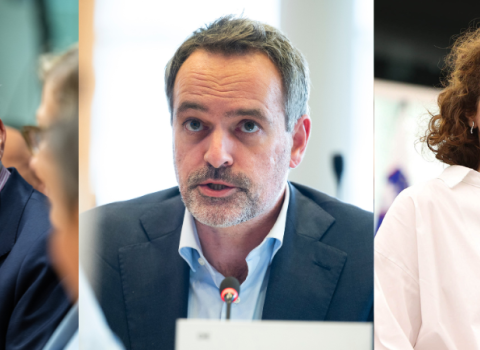In 2009-10, public procurement in the UK was valued at over £236 billion, or approximately 15 per cent of GDP. The government is the single largest customer in the country. This magnitude of expenditure provides enormous potential to stimulate innovation and encourage economic growth – a potential which, according to the Committee, is not being realised, in its report, “Public procurement as a tool to stimulate innovation.”
Following an investigation of departments across the government and of the Department for Transport in particular, the Committee calls for a root and branch change in attitude towards adopting innovative solutions throughout the public sector. The report calls for the government to update its approach to procurement to achieve better value for money, promote economic growth, and encourage the translation of scientific research into new goods and services.
The committee says it has been left with the impression that, “The overarching problem lies at the very heart of government. Despite the efforts that have been made to make government procurement more effective, there remains a culture within government departments and other public sector organisations which inhibits—or may even be antithetical to—the adoption of innovative solutions.”
When procurement decisions are being taken, either insufficient or, worse, no consideration is being given to whether an innovative solution would be preferable, not only in terms of achieving better value for money but also in terms of wider benefits, such as the potential to promote economic growth through stimulating new and commercially significant ideas in industry, or encouraging the translation of scientific research into innovative goods and services.
This state of affairs has been made worse by the current economic climate, the committee says. There is a wide-spread perception of a tension between the need to save money on the one hand and adopting innovative solutions on the other. Innovation is seen as risky and potentially expensive compared to the supposedly safer option of tried and tested solutions.
The committee has identified a number of areas where the government can take steps to integrate imaginative, innovative thinking into the procurement process. A single Minister should be made responsible for both procurement and innovation across government and a Minister should be appointed in each government department with specific responsibility for procurement and innovation within their departments. In addition, departmental Chief Scientific Advisers should have a greater role in ensuring the procurement of innovative ideas by their departments, encouraging engagement with industry and academic communities and assisting departments in the formulation of their long-term planning through horizon-scanning activities.
Other areas for improvement involve developing the capacity of departments to act as intelligent customers, more strategic planning of longer-term procurement and more challenging specification of departmental procurement plans.
The committee chairman, John Krebs, said, “Government spent over £236 billion in 2009-10 on buying goods and services. This represents a significant opportunity for public sector organisations to use that money not only to encourage innovative solutions to procurement problems but to achieve better value for money and to stimulate economic growth.”
Krebs claims the public sector tends to fall back on tried and tested solutions and new ideas are stifled by a culture of risk-aversion and overly burdensome procurement processes. “We have uncovered a number of barriers to innovative thinking and we call on the government to use its expertise to resolve them without delay.




 A unique international forum for public research organisations and companies to connect their external engagement with strategic interests around their R&D system.
A unique international forum for public research organisations and companies to connect their external engagement with strategic interests around their R&D system.